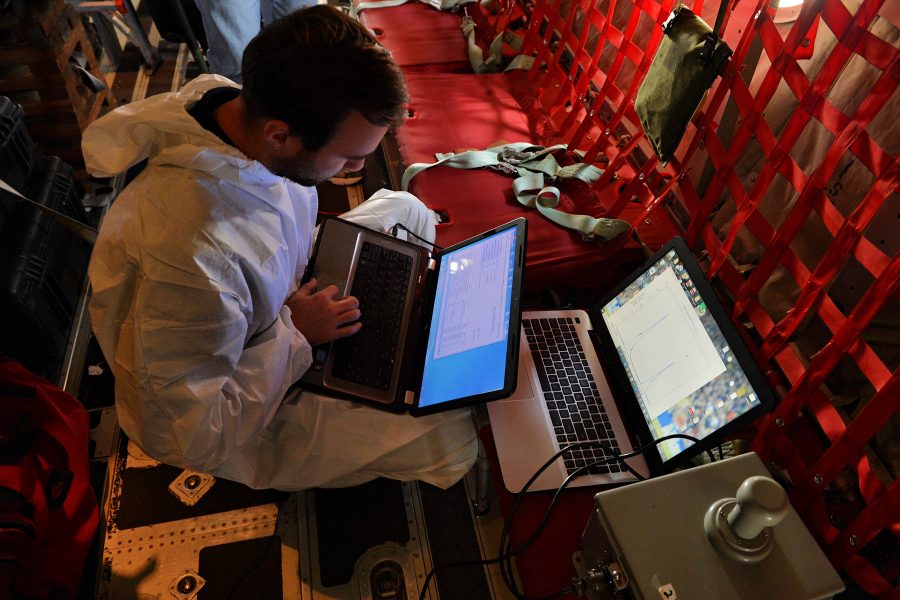Air Force researchers and mobility crews recently evaluated six airframes in an effort to better understand the airflow of mobility aircraft in case there needs to be a large airlift of COVID-19 positive passengers.
Currently, the Air Force relies on the Transportation Isolation System, but only a few pods can be carried on a C-17.
In early April, U.S. Transportation Command issued an urgent operational need request to understand how air circulates within mobility aircraft to better guide the planning of large-scale airlifts of these patients. Within a week, Air Mobility Command established the testing process and scheduled aircraft to come in for evaluation, said Maj. David Sustello, the operations officer for AMC’s Test & Evaluation Squadron.
A KC-135, KC-10, KC-46, C-17, C-130J, and C-5 all flew in to the 155th Air Refueling Wing at Lincoln Municipal Airport in Nebraska for the testing process, where AMC Airmen, civilians, and scientists with the National Strategic Research Institute at the University of Nebraska conducted tests.
The aircraft flew in from around the country, participating in a two-day testing cycle. All aircraft were from the Active Duty, except for a KC-135 from the Nebraska base itself, but the crews were made up of Total Force Airmen.
Each aircraft underwent ground tests, as well as a two-to-three-hour flight. During the evaluation process, scientists placed systems around the aircraft that released an aerosol simulant—polystyrene latex miscrospheres—that is approximately the same size in diameter to the new coronavirus. The idea was to simulate a passenger coughing or sneezing.
The miscroscopic particles in each release carried an identification tag, such a phosphorescent dye, to give it a signature. After the ground run or flight, experts would collect samples from different parts of the plane, including inside the cockpit, to understand how air circulation could move a virus throughout the cabin. The data is being used to build computer simulations to model potential airlift missions of infected patients.
“Each aircraft tested is very different, and had their own characteristics,” Sustello said.
Experts are still analyzing the data, but the first evaluations are expected within about a week.
Because of the Defense Department-wide restriction of movement order, the personnel involved in the process had to receive waivers to fly on military aircraft to Nebraska for the test. However, they still had to wear face coverings and maintain social distance.
“It was really a victory for the Total Force structure,” Sustello said on bringing the personnel and aircraft together on such a short timeline. “I don’t think it’s too often you see six aircraft all fly to one location and all testing within a week.”
